Safety of fusion compared to fission
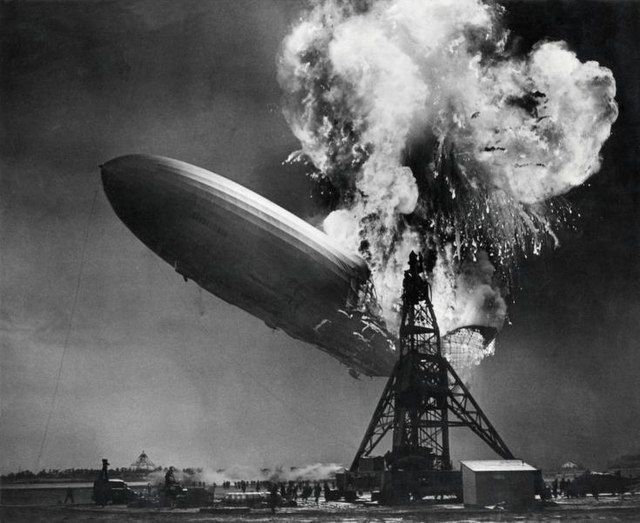
Advocates suggest that fusion reactors are safer than fission reactors, sometimes claiming that fusion is intrinsically safe and fission is intrinsically unsafe. This page discusses the safety situation at fusion reactors, pointing out that they certainly have dangers, with the most serious risk for both fission and fusion reactors being a loss of coolant followed by a hydrogen explosion.
This page is long and detailed because of the importance of the issue, it has several sections as follows.
- Safety infusion compared to fission reactors.
- Published analyses of fusion safety, with a catalogue of risks.
- Examples of specific safety risks, giving five examples of the risks that come from the complexity of fusion power plants.
- Safety concerns of the nuclear regulator for ITER, emphasising the construction hold put on the international ITER reactor at the beginning of 2022 by the French Autorité de sûreté nucléaire (ASN). This action must be taken as an illustration of serious concerns for the safety of fusion reactors.
- Proposals to modify regulations for fusion reactors.
- Conclusion on safety in fusion reactors.
Safety in fusion compared to fission reactors
In mainstream fusion devices, the fusion reaction in the plasma relies on continual fueling with frozen pellets of deuterium-tritium and continual heating with devices external to the plasma. Once these mechanisms stop there is no chance of the fusion reactions continuing.
For fission, there are popular fears that the reactions could loose control and "run-away". The China Syndrome Film (1979) put into the continuousness of the general public the concern that cores of nuclear fission reactors could meltdown and burn through the Earth. In reality, there have never been any fission meltdown run-away accidents. All Three Infamous Nuclear Accidents, started with loss of coolant incidents, leading to subsequent melt-down consequences for the cores, but were not initiated by core run-away. In all three accidents overheating occurred after the loss of coolant incidents, caused hydrogen formation and explosions.
The paper of Wu et al., compares safety concerns in fusion reactors with fission reactors. The four vignettes below, taken from this paper, illustrate the sequence of events which led to the hydrogen explosions in the fission reactors at Fukushima.
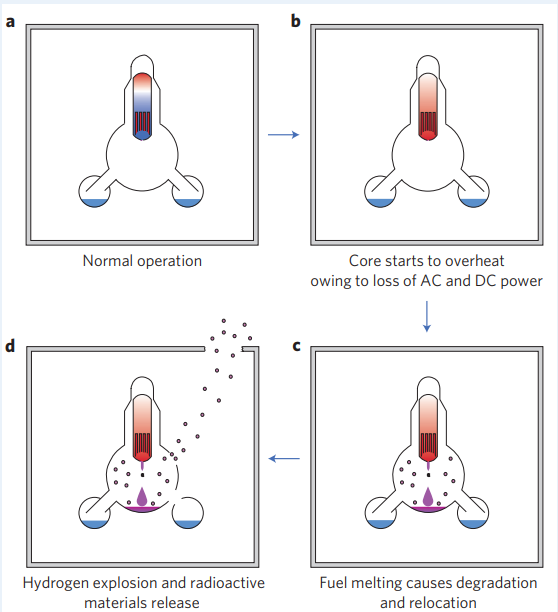
Schematic illustrating the development of the Fukushima nuclear incident: a) nuclear plants have backup power; b) If all power is lost, loss of cooling pumps causes fuel temperature to rise; c) If temperature rise is large enough, fuel begins to melt, resulting in core and pressure vessel damage; d) Hydrogen is released from chemical reactions between water and hot fuel, leading to explosions and releasing radioactive materials to the atmosphere. The colours indicate temperature from blue (cold) to red (hot).
Hydrogen explosions at fusion reactors would have different initiators than at fission reactors but could lead to similar radioactive contamination of the surrounding environment. For fission, the risk is with the hot reactor core and with fusion, the main risk is with the hot breeder blankets. Both reactor types contain large quantities of radioactive material, and a fusion reactor would actually have higher levels of short-lived radioactivity ejected than a fission reactor. For either reactor type, an explosive discharge of materials could be devastating and so like modern fission reactors, fusion reactors will have massive containment vessels, called Bioshield, intended to prevent the escape of radioactive materials to the environment. The figure below shows the bioshield protection of the DEMO prototype fusion power plant tokamak.
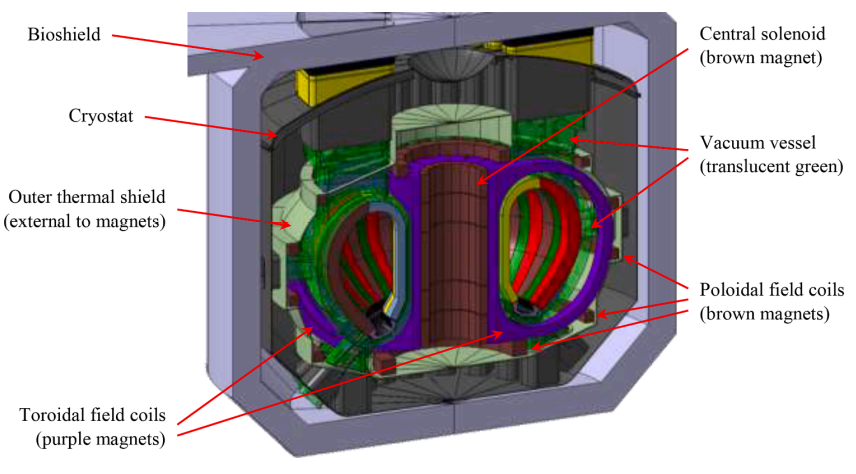
DEMO containment structure, Bioshield, around tokamak.
The same Wu et al. paper gives the table below indicating the main accidents considered for fission and fusion power plants, showing that nearly all accident conditions for fission reactors are also present for fusion reactors. Further, fusion actually has more possible accident conditions due to the multiple, complex, associated systems.
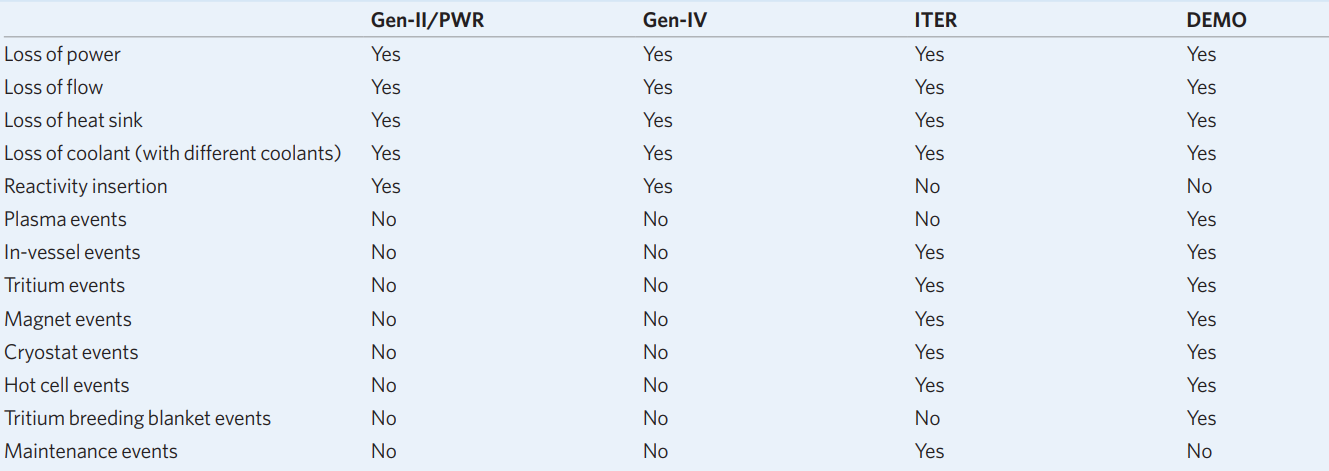
Main "Design-Basis Accidents" for different nuclear energy systems: GEN-II/PWR and Gen-IV are fission reactors while ITER and DEMO are fusion reactors.
Published analyses of fusion safety
A prospective on safety in fusion reactors is given in the paper, D. Perrault, a safety engineer from the French Institut de Radioprotection et de Sûreté Nucléaire (IRSN). Further papers by Taylor et al., and by Lukas and Williams, point out many concerns. Below is a partial list of risks presented in these three papers:
- Decay heat removal following a loss of coolant accident.
- Decay heat removal during replacement of blanket sectors.
- Personnel exposure to ionizing radiation.
- Releases of tritium during normal operation.
- The management of radioactive waste.
- Loss of plasma control.
- Magnetic stored energy.
- In-vessel dust and tritium
- Hydrogen explosions.
Nuclear regulators evaluate accidents in classifications of "Design-Basis Accident" and "Beyond Design-Basis Accident", where a Design-Basic Accident is defined as: "A postulated accident that a nuclear facility must be designed and built to withstand without loss to the systems, structures, and components necessary to ensure public health and safety". With these classifications the list of accidents considered for ITER is presented below, taken from Nuclear Fusion Reactors by IRSN.
Accident type | Dose, mSv at 2.5 km |
Design-Basis Accident | |
| Water ingress into vacuum vessel (VV) | 10-4 |
| Air ingress into VV | 10-2 |
| VV primary cooling system (PCS) leak outside VV | 10-5 |
| Divertor primary cooling system leak outside VV | 2 10-2 |
| Leak in isotope separation system | 10-4 |
| Failure of fueling line | 5 10-3 |
| Loss of confinement in hot cell building | 4 10-4 |
| Leak from a tritiated water tank | 2 10-2 |
| Loss of confinement on transfer cask | 4 10-3 |
| Failure of largest opening glove box | 3 10-5 |
Beyond Design-Basis Accident | |
| Air ingress into VV + failure of VV penetration | 4 10-3 |
| Water ingress into VV + failure of VV penetration | 0.1 |
| Loss of plasma without fusion shutdown + water in VV | 3 10-5 |
| Blanket PCS leak outside VV without fusion shutdown | 2 10-2 |
| Air ingress into VV causing explosion | 0.2 |
| Significant breach of VV and cryostat | 0.3 |
| VV PCS outside VV + loss of other coolant | 4 10-4 |
| Water and helium leaks into cryostat | 2 10-3 |
| Failure of fuelling line + failure of detritiation | 0.2 |
| Fire in tritium building | 0.2 |
| Leak from isotope separation system + explosion | 0.1 |
| Fire in waste treatment area propagating to storage | 0.3 |
| Tritium explosion during regeneration of a VV cryopump | 0.3 |
List of accidents considered by ITER with the corresponding radioactive release to the environment, measured in units of millisieverts (mSv). The worst accidents are in the "Beyond Design-Basis" category.
In this evaluation of radiation escape to the environment, only Beyond Design-Basis accidents with multiple events or explosions and fires give significant contaminations at 2.5 km from the site. The typical natural dose of radiation is about 2.5 mSv per year, so at this distance, all these doses are negligible. Clearly personnel on site would receive a higher, possibly dangerous, dose.
Examples of specific safety risks
The following five sections give some detailed examples of safety risks in fusion power plants.
1) Breeder Blankets: loss of coolant accident
Tokamak breeder blankets, discussed in some detail in the page Breeder Blanket, present a large range of serious safety risks because of the enormous high energy neutron flux they receive, the volatile and toxic material they contain and the complex cooling system that must remove the heat generated in them. Loss of coolant accidents are a major risk for the breeder blanket. The picture shows the cooling system for the DEMO Helium Cooled Pebble Bed breeder blanket option. The 80 independent breeder blanket modules require an enormous network of cooling pipes and heat exchangers. Because of the consequences of losing cooling, each blanket module has two redundant cooling circuits.
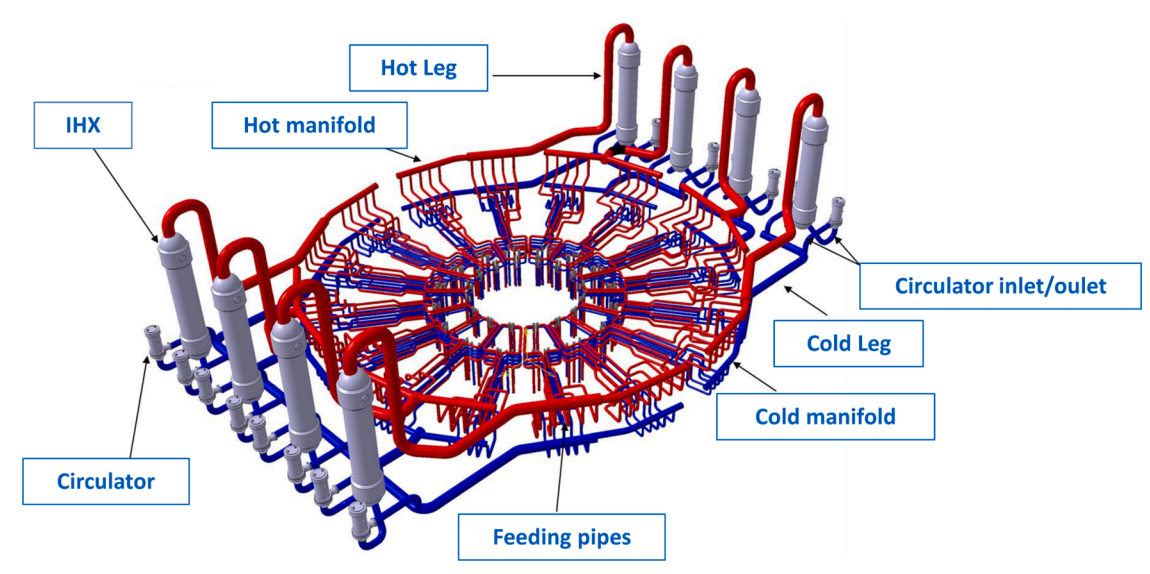
Complex cooling system for DEMO breeder blankets
Any coolant loss must immediately stop fusion operations and a failure in the trip system would be instantly dramatic. Once the fusion operations stop, the problem is decay heat from the material made radioactive by neutron activation. The plasma facing surfaces are tungsten and have the largest decay heating, around 325 W/kg. The structural parts are usually Eurofer steel and have decay heating of about 100 W/kg. Due to their large size, the total decay heat load in the breeder blanket would be around 5 MW per module. Calculations show that the first wall of the breeder blanket would reach 1200°C after 10 days if no cooling is restored. While these temperatures are not high enough to melt the metal structures, there are serious concerns as to the fate of the materials inside the modules. The beryllium and lithium contents have gigantic risks to health and safety. Beryllium exposure is well known to cause Berylliosis an acute and sometimes deadly lung disease. Lithium fires are becoming notoriously difficult to extinguish in battery storage farms and electric vehicles. Structures at 1200°C containing many tonnes of each seem to present a very large safety risk.
2) Breeder Blankets: remote maintenance
Remote maintenance for DEMO is discussed in the page, Maintenance, Breakdowns and Availability, and the operations on the blanket modules represent the biggest task. The breeder blanket modules, 15 metres high and weighing 80 tonnes, will be regularly replaced about once every 4 years, due to radiation damage. On removal, their radiation levels would give a person in proximity a lethal dose within 10 seconds, hence the whole operation must be performed completely remotely. The schematic below indicates the complex operation: extraction from the vacuum vessel; insertion into a transport cask and transfer to the Active Maintenance Facility (AMF). The modules are then removed from the casks and stored in hot cells after a bake-out process at 900°C to ensure the release of any tritium which has permeated into the materials. After allowing a period for the radioactivity to diminish by decay, the module will be disassembled and the materials recycled, in operations which are expected to require between 6 and 12 years in the AMF.

Schematic of the transfer of a breeder blanket module in a cask to the AMF.
The design and operation of the complicated remote handling equipment in this intense environment will be very difficult. In particular any video and monitoring sensors will have a limited lifetime because of the sensitivity of electronics to radiation damage. The possibility of machinery breakdown is this complex process is already envisaged and the recovery from such a failure would require another remote operation. Any human intervention is clearly excluded for decades. The figure below indicate the size and complexity of the remote handling equipment required.
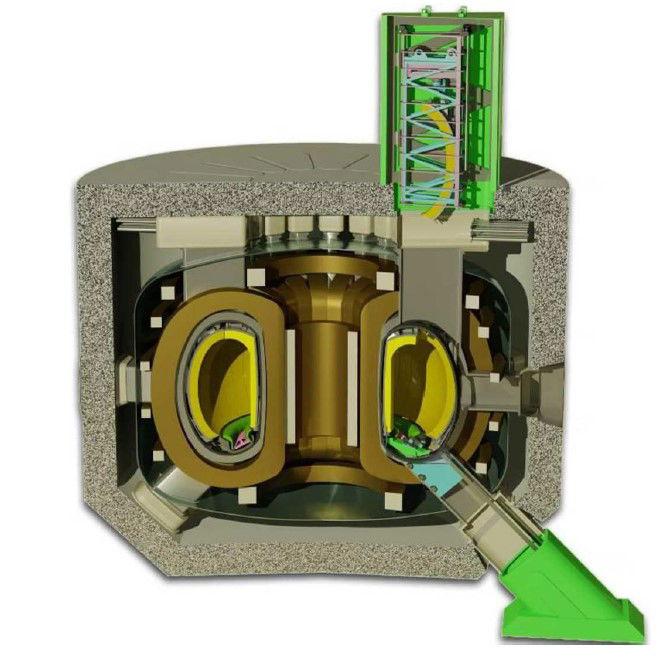
DEMO Breeder Blanket and Divertor remote handling removal systems.
The figure below shows the plans for the full DEMO Active Maintenance Facility which dwarfs the adjacent reactor building
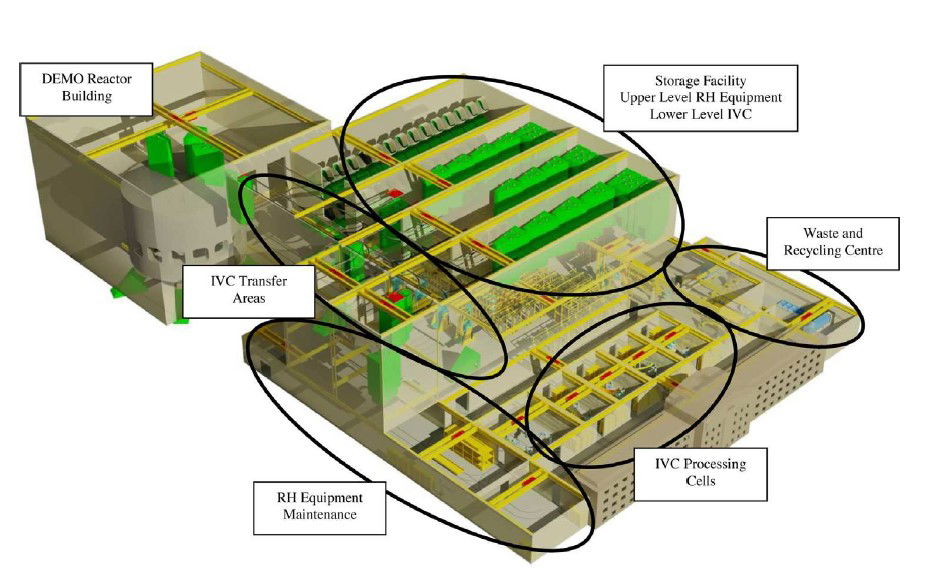
DEMO Active Maintenance Facility adjacent to Reactor Building (from Thomas et al. ).
3) Risks to personnel in normal operations
The tokamak building, shown in the figure below, houses the tokamak and numerous plant systems. The building complex has extensive safety precautions, including a cylindrical containment vessel (bioshield) of 2m thickness with requirements to stop the release of radioactive substances during normal operation and in accident situations.
The buildings are designed to withstand and contain the following possible accidents:
- seismic events;
- aeroplane crash;
- release of tritium or activated corrosion products;
- contamination with radioactive substances;
- neutron and/or gamma radiation emitted from cooling water systems and lithium-lead cooling systems;
- fire, explosion or flooding.
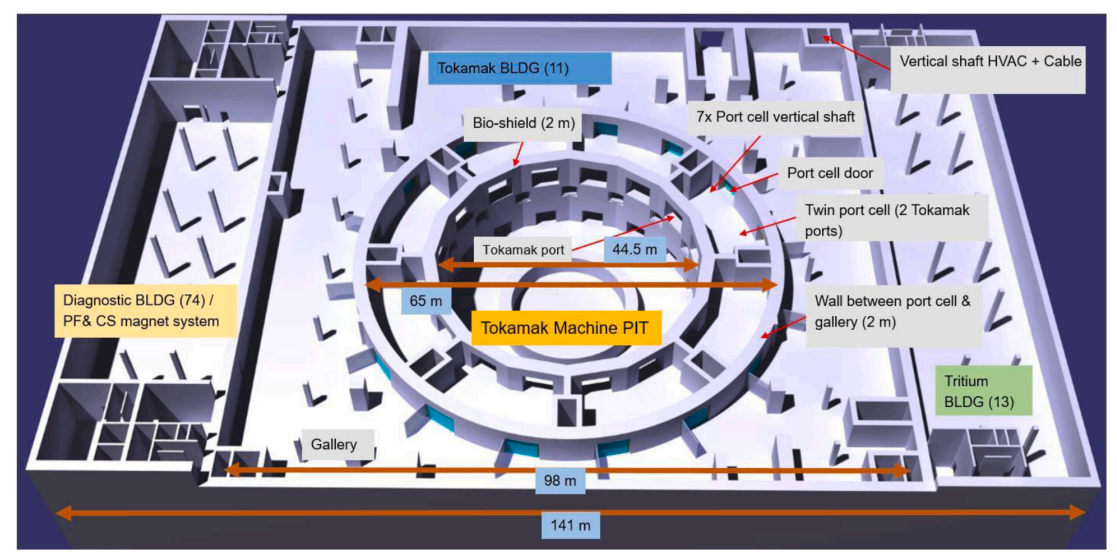
DEMO Tokamak building level complex, showing one lower floor
By necessity of size, some plant is located outside the bioshield and fluids are transported through the bioshield to these locations. The water-cooling systems are in this category and present significant radiation hazards to personnel. Neutron activation of cooling water inside the tokamak is a major issue because the high flux of fusion neutrons from fusion causes activation of oxygen in the water to produce short-lived isotopes of nitrogen: 16N (half-life 7 s) and 17N (half-life 4 s). With the high water flows, the highly radioactive water passes into the surrounding rooms before these nitrogen isotopes decay. The neutron decay from the 17N, in turn causes activation in the steel pipes in the primary heat transfer system in these areas shown in the figure below.
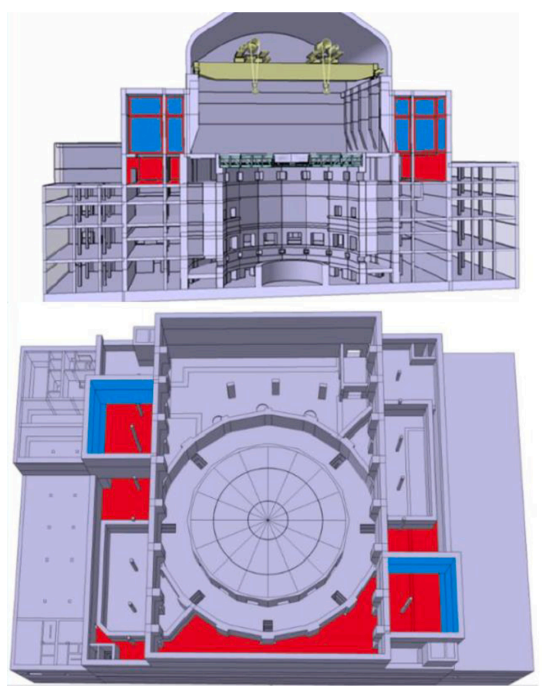
Primary Heat Transfer System equipment rooms outside the bioshield which have high occupational radiations levels, shown in red and blue.
The table below, taken from the paper by Gliss et al., gives examples of the occupational radiation exposure in rooms related to the water-cooling system. Some locations would rapidly give a lethal radiation dose (5 Sv) to personnel, other locations give the yearly allowed dose (20mSv).
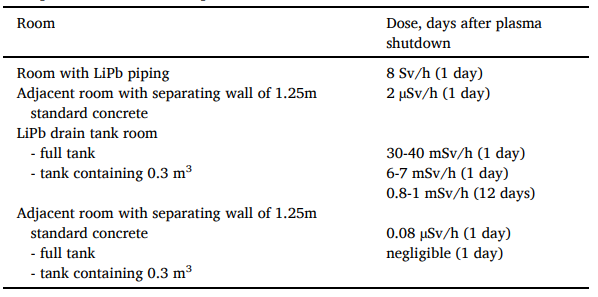
The paper Terranova et al., calculates the radioactive deposits which would appear in the maintenance of the heat exchanger of the divertor cooling system. This reports an activity, at the end of operations, giving levels for several radioisotopes including, 36 GBq from 60Co (half-life 5 y) and 5 TBq from 55Fe (half-life 3 y), originating from activation of iron in the cooling circuit. The 60Co level is at the level of dangerous to the quality of life.
4) Dust accumulation in vacuum vessel
Dust particles are produced in tokamaks by interactions of the energetic plasma with surfaces. The images below, from Sharpe et al., show dust particles with sizes between 0.1 and 10 micrometres (μm).
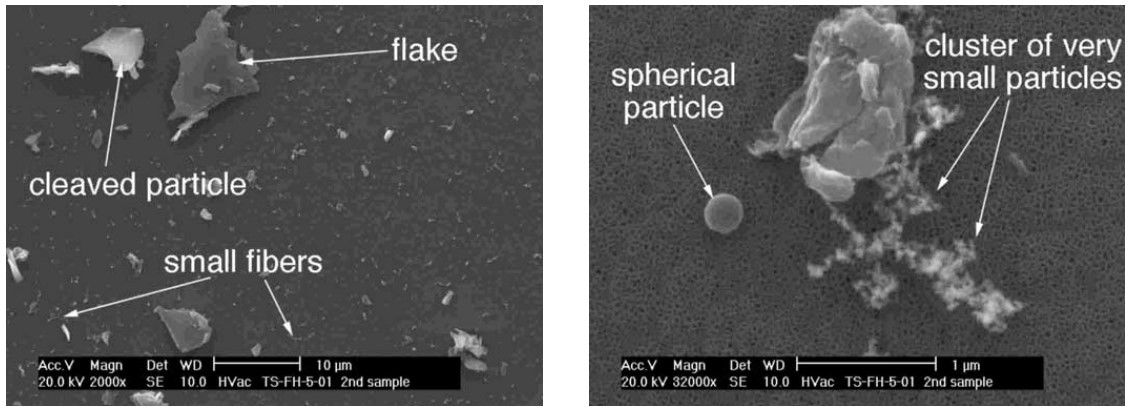
Scanning electron microscope images of dust particles from fusion devices
The figure below, from Rubel et al., shows examples of melt zones on the beryllium plasma facing wall of JET where dust particles are produced. This beryllium dust represents a significant risk to personnel from the dangerous disease of berylliosis. ITER will have a beryllium plasma facing first wall and the has been the source of much controversy because of the risks to personnel, as described in the articles of Celia Izoard in the magazine Reporterre.
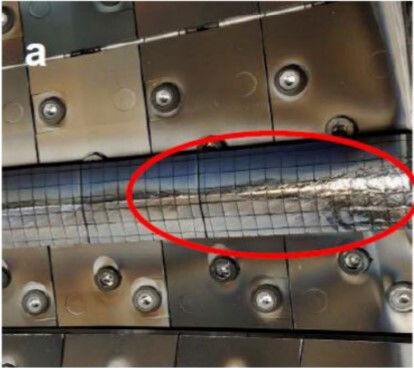 | 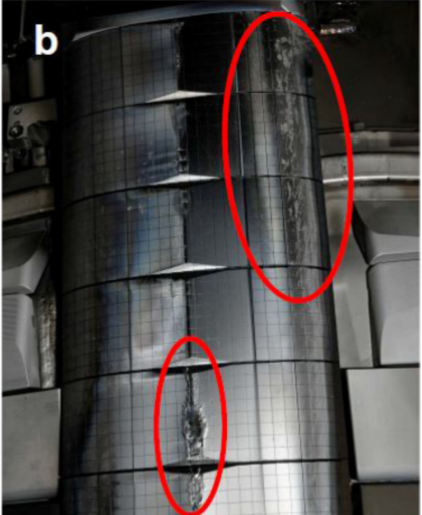 |
Examples of melt zones in JET in configuration with ITER-like Walls.
A surprisingly large mass of dust is expected to be produced in fusion devices. Mazzini et al. estimate DEMO will produce 1000 kg/ year of tungsten dust from normal operations with the possibility of between 4 and 460 kg of dust in certain individual disruption events. A consequence of this amount of metallic dust is that a significant quantity of tritium will be trapped in the dust particles. Mazzini et al. estimate this could be a few kg which is much greater than the few grams of tritium normally injected into the device for fusion reactions. This large amount of dust presents a range of hazards because of its radioactivity, chemical reactivity and chemical toxicity. The dust could also present complications to the normal operation of the fusion reactor. To initiate a chemical explosion there must be both a source of ignition energy and a source of oxygen to feed the reactions. A worst-case scenario is that of a massive water leak onto hot dust with a pressure build-up and an explosion of the released hydrogen. A loss of vacuum and air ingress into the vacuum vessel could also lead to ignition. The risk of hydrogen explosions in fusion power plants is a significant risk and is described further in the next section.
5) Hydrogen Explosions
Hydrogen is classified among the “extremely flammable” substances, as shown by its properties compared with methane and petrol in the table below, which is taken from the report ARIA: Accidentology involving hydrogen.
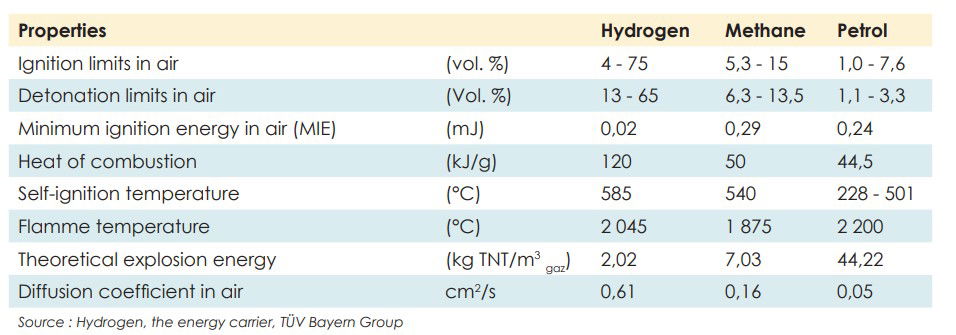
Flammability properties of hydrogen compared to methane and petrol (gasoline).
The main physico-chemical properties of hydrogen include:
- low molar mass and small size giving it a high tendency to leak extreme flammability and low ignition energy;
- ability to embrittle metals and alloys by altering their mechanical properties;
- violent reactions with certain compounds due to its reducing properties.
In the form of the heavy isotopes deuterium and tritium, hydrogen is the fuel of mainstream fusion reactors. Although the amounts of fuel inside the fusion reactor are relatively small, significant amounts or hydrogen is bound in the large quantity of dust in the reactor and on the plasma facing surfaces. This material presents a significant risk of hydrogen explosions. As discussed already above, for both fission and fusion reactors, hydrogen explosions are a major accident risk. The ARIA report discusses 215 examples of industrial accidents and of these 5 are in the nuclear industry as shown in the table below.
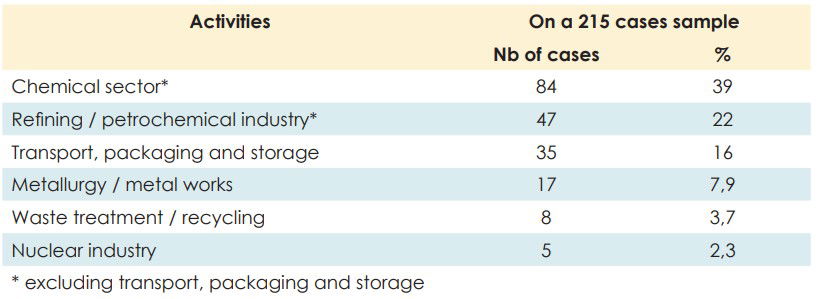
Industrial activities involved in hydrogen accidents discussed in the ARIA report. This report considers accidents which occurred before 2007, with 123 in France and 92 in other countries.
In fission reactors, the hydrogen generation is activated by the core material water reactions (e.g., with zirconium cladding, steel from supporting structures and boron carbide control rods). The images below show the Fukushima accident in 2011 initiated by a tsunami which caused a loss of cooling, resulting in hydrogen explosions.
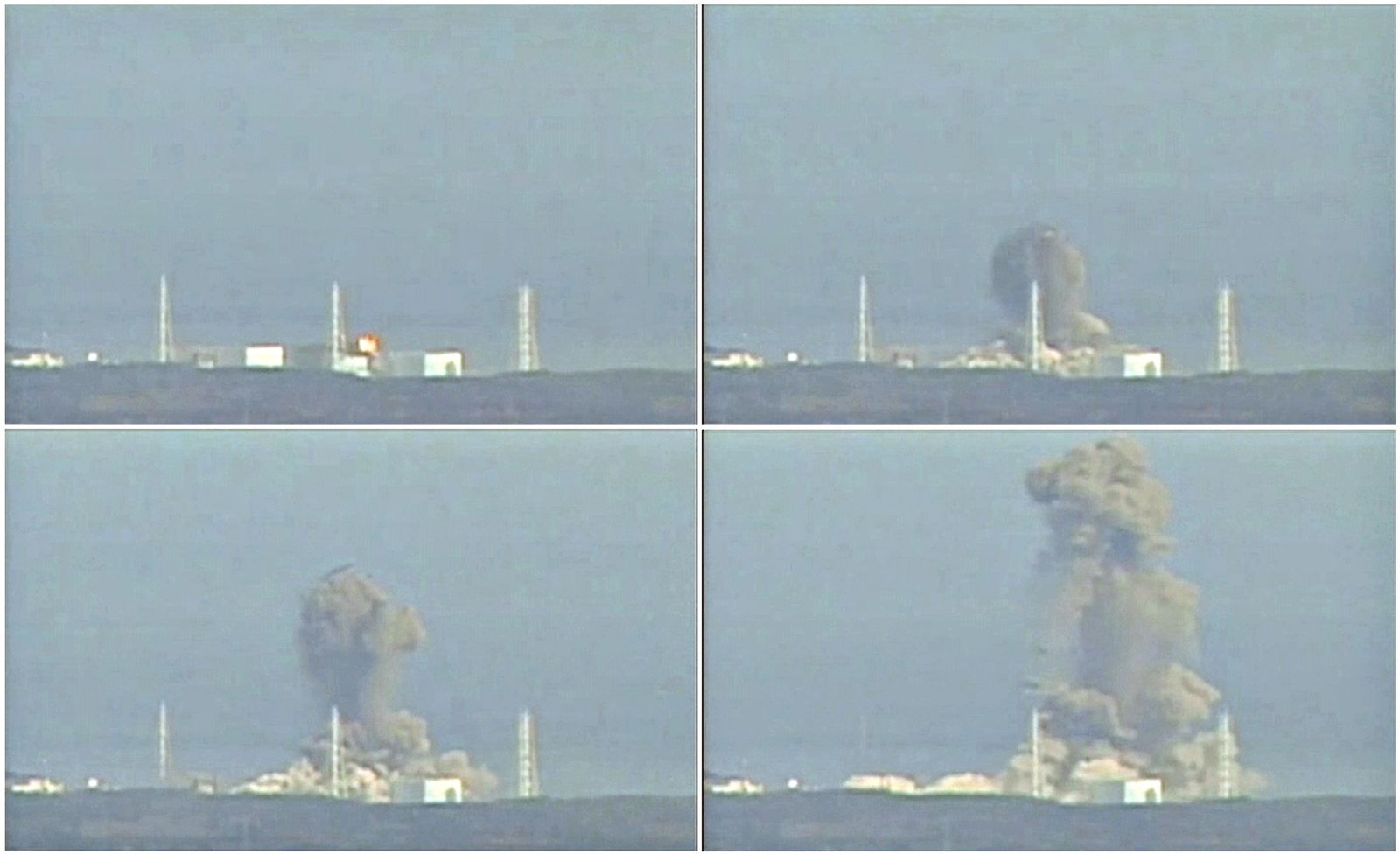
Hydrogen explosion at Fukushima Daiichi nuclear fission power plant following an earthquake and tsunami. The sea water ingress caused the cooling plant to fail but did not enter the reactors. The hydrogen was formed from the overheated cooling water in the hot reactor cores.
In the Three Mile Island fission reactor incident in 1979, the core overheating was again due to failure of the cooling system followed by hydrogen gas production. In this accident, despite media headlines of impending doom for 5 days, no explosion took place and the radioactive releases to the environment were tiny. The massive Chernobyl fission reactor accident in 1986 was again caused by loss of coolant, in this case caused by a deliberate experiment to study the effect of shutting down the power to the cooling system. The experiment failed and the operators were not able to safely shutdown the reactor leading to an explosion and extensive fires. The exact sequence of events in the explosion remains unclear but certainly involved hydrogen generation and incineration.
In fusion reactors the fuel, tritium, is a heavy hydrogen isotope and chemically identical in its reactions to normal hydrogen. Hydrogen can also be produced in similar ways as in fission reactors with oxidation reactions between water/steam and plasma facing components or hot dust. In fusion power plants, hydrogen explosion risks exist in the tokamak vacuum vessel but also in the tritium plant buildings and the active maintenance facilities. Mitigation plans are being developed for all areas. The bioshields are being designed to contain all possible explosions inside the power plant and to avoid any escape of radioactivity to the surrounding environment. Doubts about the ITER bioshield are among the reasons for the construction stop order from ASN, which is discussed below. Studies of methods to mitigate the risk of hydrogen explosions in fusion facilities are in progress. Methods include passive autocatalytic recombiners which come into action spontaneously as soon as the hydrogen concentration increases and are standard in fission reactor confinement regions. Another method is the injection of non-reactive CO2 into the vacuum vessel as soon as an air leak is detected. Most of the serious incidents in the list of accidents above involve hydrogen explosions.
Safety concerns of the nuclear regulator for ITER
The French Autorité de Sûreté Nucléaire (ASN) refused, in Jan 2022, to release a "Hold Point" on the assembly of the ITER Tokamak, stopping any activities which could not be reversed and stalling the tokamak assembly for more than a year. The New Energy Times website explains the situation in a post: French Regulator Halts Assembly of ITER Reactor. In order to lift the hold, the ASN (ASN: CODEP-DRC-2022-000845.) requires the following actions:
- Clarification of radiological maps and sizing of biological shielding
"The neutron budget values that you predict during the operation of the installation are greater than the maximum neutron fluence taken into account for the sizing of the installation. The information submitted concerning the radiological maps does not make it possible to demonstrate the control of the limitation of exposure to ionizing radiation, a major challenge for a nuclear fusion installation. In particular, the activation of materials by neutron flux has not been properly taken into account and the exposure of workers in locations adjoining nuclear buildings must be evaluated with realistic assumptions, for the different modes of operation, in order to demonstrate compliance with regulations."
- Demonstration of civil engineering structure behaviour under extreme conditions
"To date, the following have not been integrated into the modelling of civil engineering behaviour: The distribution and evolution of the weights related to the design evolutions you have made, especially in recent months, to the installation, and those that you will bring for address the above points. Problems already noted on the installation, such as the detachment of the strip from certain seismic supports. In your modelling of civil engineering behaviour, you have not taken into account certain phenomena, such as the "hard core" level earthquake or specific loading combinations (for example, the combination of heat loading and overpressures related to a total release of helium)."
- Assessment of fission products due to natural impurities in beryllium
"You have reported significant uncertainties regarding the quantity of fission products that can be mobilized in an accident situation, which has consequences, not yet evaluated, on the control of risks associated with dust generation, containment system design and effectiveness dynamics and detritiation, as well as, more generally, concerning normal and accidental installation (discharges, waste, etc.). These topics could lead to changes in design of systems associated with the vacuum chamber, affecting masses and durability civil engineering."
- Welding strategy to overcome geometrical non-conformities of welding bevels of the delivered vacuum vessel sectors
"The first two sectors of the vacuum chamber received on site are affected by dimensional non-conformities. As a result, the adequacy of the methodologies you are currently considering for the realization and control of these welds is not guaranteed."
These points express concern with several aspects of safety at ITER. The situation clearly proves that safety is not straightforward for fusion power stations.
Proposals to modify regulations for fusion reactors
There are studies underway to see if safety regulations for fusion power plants should be different from those in place for fission power plants. The European Commission has published a report on this issue: Exploring Regulatory Options for Fusion Power Plants. The new private fusion energy companies which are described in the section: Alternative Approaches, have a deep interest to avoid interventions such as the ASN ITER construction hold for their projects, hence they are lobbying hard for different regulation for the fusion industry compared to the fission industry.
Conclusions on safety in fusion reactors
Open literature does not give any probabilities on the safety risks in nuclear fusion power stations. This page has catalogued examples of risks in fusion reactors in a qualitative way. A quantitively risk analysis is beyond the scope of this overview.
The following conclusions on fusion safety can be made:
- significant risks exist for fusion power plants;
- fusion is not "intrinsically safe";
- some of the risks for fusion reactors are similar to those for fission reactors.